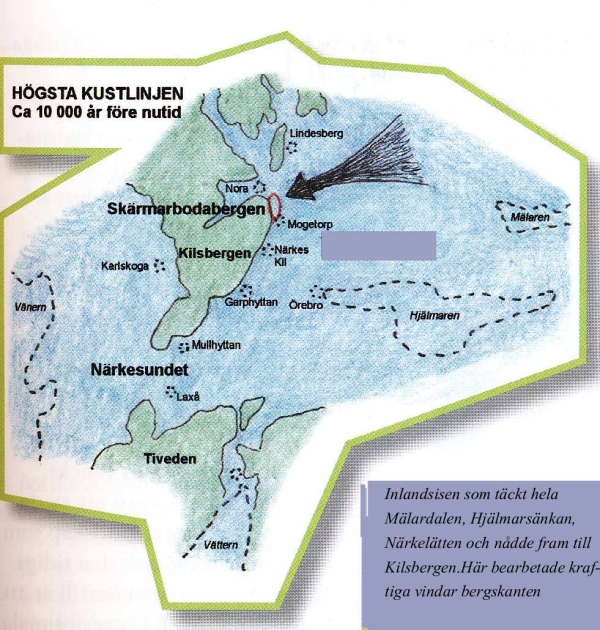Skärmarbodabergens hemlighetet EarthCache
Skärmarbodabergens hemlighetet
-
Difficulty:
-

-
Terrain:
-

Size:  (other)
(other)
Please note Use of geocaching.com services is subject to the terms and conditions
in our disclaimer.

I den nordöstra delen av Kilsbergens förkastningsområde ligger Skärmarbodabergen. Berggrunden utgörs av urberg som i bergspartiernas sidor är kraftigt uppspruckna.
Terrängen är ofta kuperad och de geologiskt intressantaste objekten, blockgrottorna, finns framför allt på öst och nordsidorna. Området förefaller vara Sveriges blockgrottätaste områden.
I den här Earthcachen ska det förklaras hur blockgrottorna uppstått.
Skarmarbodabergen are located in the north-eastern fault area of Kilsbergen. The bedrock consists of granite as the rocky party sites are heavily fractured.
The terrain is very hilly and the geological most interesting objects, the block caves, are mainly on the east and north parts. Nowhere in Sweden will you find this amount of caves.
The aim of this Earthcache is to understand how these caves has been occurred.
Berggrunden består av urberg som beskrivs som ”rödaktig grovkristallinsk granit med stora och mestadels tätt liggande fältspatsögon”. När inlandsisen gick över området tryckte den in jordskorpan. Isen smälte i den här delen av landet för cirka 10 000 år sedan och efterlämnade sig ett hav som kan sägas vara en föregångare till Östersjön.
Med isen i norr uppstod ett klimat med mestadels nordostlig och hård vind. Landhöjningen var i början ca 4 mm per år. Under den här tiden skapades de flesta blockgrottorna. (källa ”Skärmarbodabergens hemlighet” av Carl Anders Lindstén.)
The bedrock is described as “reddish coarse crystalline granite with large, mostly closely spaced feldspar eyes”
When the ice went over the area it was pressed into the crust. The ice melted in this part of the country for about 10 000 years ago, leaving a sea that can be said to be a precursor to the Baltic.
With ice in the north it was a climate with mostly north-east and strong winds. The uplift was in the beginning about 4 mm per year. It was during this era the block caves occurred. (Source:” Skärmarbodabergens hemlighet” by Carl Anders Lindstén.)

För att logga den här earthcachen ska du svara på ett par frågor.
1. Ett svenskt namn på den granit som beskrivs som ”rödaktig grovkristallinsk granit med stora och mestadels tätt liggande fältspatsögon”.
2. Vad hette det första hav som var en föregångare till Östersjön
3. Förklara mekanismen i hur själva blockgrottan uppstår.
4. På den plats dit cachekoordinaterna tar dig finns en sten där isräfflorna inte finns där de borde finnas. Förklara.
Mejla svaren till cacheägaren
Om Du lyckas svara på samtliga frågor kan logga
In order to log this earthcache you shall answer a couple of questions
1. What is the name for this “reddish coarse crystalline granite with large, mostly closely spaced feldspar eyes”
2. What is the name of the first sea that preceded the Baltic sea
3. Explain how the block cave occurs.
4. At the location where the cache coordinates take you there is a stone which grooves are not where they should be. Please explain.
If you cannot read Swedish, send a mail to the cache owner and you will have some translations for questions 1 and 4.
Additional Hints
(No hints available.)